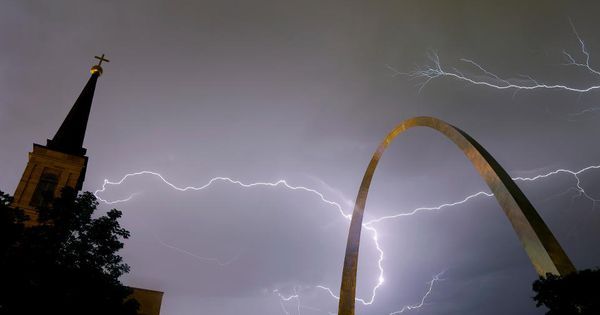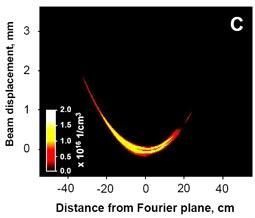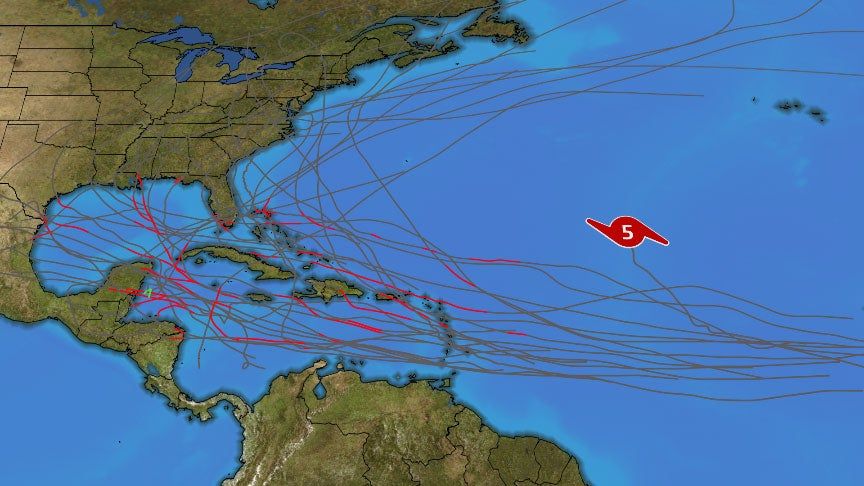An astrobiologist argues that lightning should also be prevalent on planets around other sunlike stars.



Banner Image: The 2019 ozone hole reached its peak extent of 6.3 million square miles (16. 4 million square kilometers) on Sept. 8. Abnormal weather patterns in the upper atmosphere over Antarctica dramatically limited ozone depletion this year. Credit: NASA
By: Ellen Gray NASA’s Earth Science News Team
By: Theo Stein

From tiny snowflakes to the jagged fork of a lightning bolt, it’s not hard to find examples of fractals in the natural world. So it might come as a surprise that, until now, there have remained some places these endlessly repeating geometrical patterns have never been seen.
Physicists from MIT have now provided the first known example of a fractal arrangement in a quantum material.
The patterns were seen in an unexpected distribution of magnetic units called ‘domains’, which develop in a compound called neodymium nickel oxide — a rare earth metal with extraordinary properties.


2009
The Norse thunder god Thor deflected lightning with his hammer. Physicists could soon replicate this feat using curved laser beams.
Bending lightning around tall buildings and away from airports, power plants and other facilities is just one application for curved laser beams, says Jerome Moloney at the University of Arizona, Tuscon. He and his colleagues have now made the first such beams1. “The real novelty is that we can curve light in the lab,” he says.
Laser physicists already use beams made up of short laser pulses to etch out ‘plasma channels’. These pulses manipulate the speed with which light travels through air — slowing it down in the centre of the beam and speeding it up at the sides. The causes the beam to continually self-focus, helping it maintain a high intensity over large distances. The beam ionizes the nitrogen and oxygen around it, creating a plasma.

BERLIN, August 21, 2019 (Newswire.com) — The Neutrino Energy Group cooperates with a worldwide team of scientists and various international research centers, which deal with application research, the conversion of invisible radiation spectra of the sun, among other things the neutrinos (high-energy particles, which ceaselessly reach the earth) in electric power.
Is renewable energy hurting consumers?
During the last decade or so, consumers around the world have been encouraged to install solar panels on top of their houses. In certain climates, these rooftop photovoltaic installations can more than cover the electrical needs of an individual home, and many solar-equipped houses feature photovoltaic systems that wire directly into the grid. At times when the home has excess solar-generated electricity left over, this energy feeds back into the grid and helps out with the electricity needs of other energy company customers.

CERN’s colossal complex of accelerators is in the midst of a two-year shutdown for upgrade work. But that doesn’t mean all experiments at the Laboratory have ceased to operate. The CLOUD experiment, for example, has just started a data run that will last until the end of November.
The CLOUD experiment studies how ions produced by high-energy particles called cosmic rays affect aerosol particles, clouds and the climate. It uses a special cloud chamber and a beam of particles from the Proton Synchrotron to provide an artificial source of cosmic rays. For this run, however, the cosmic rays are instead natural high-energy particles from cosmic objects such as exploding stars.
“Cosmic rays, whether natural or artificial, leave a trail of ions in the chamber,” explains CLOUD spokesperson Jasper Kirkby, “but the Proton Synchrotron provides cosmic rays that can be adjusted over the full range of ionisation rates occurring in the troposphere, which comprises the lowest ten kilometres of the atmosphere. That said, we can also make progress with the steady flux of natural cosmic rays that make it into our chamber, and this is what we’re doing now.”

Wangari Maathai for years told people to plant trees. She is the reason Kenyans plant trees in protected forests, and will continue for a very long time.
Trees are a low-tech, high-efficiency way to offset much of humankind’s negative impact on the climate. What’s even better, we have plenty of room for a lot more of them.
A new study conducted by researchers at Switzerland’s ETH-Zürich, published in Science, details how Earth could support almost an additional billion hectares of trees without the new forests pushing into existing urban or agricultural areas. Once the trees grow to maturity, they could store more than 200 billion metric tons of carbon.
Great news indeed, but it still leaves us with some huge unanswered questions. Where and how are we going to plant all the new trees? What kind of trees should we plant? How can we ensure that the new forests become a boon for people in those areas?

Hurricane Lorenzo intensified into a Category 5 hurricane Saturday night, smashing a record for the easternmost Atlantic hurricane to attain such a strong intensity, and poses a danger to the Azores this week.
Lorenzo rapidly deepened Saturday from Category 3 status with estimated maximum sustained winds of 115 mph at 11 a.m. EDT to Category 5 status with winds of 160 mph just 12 hours later.
This is by far the farthest east in the Atlantic Ocean any of the previous 35 Category 5 hurricanes have occurred in records dating to the 1920s.